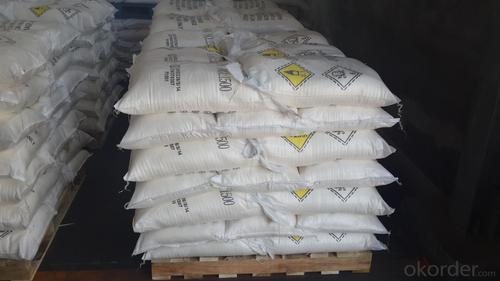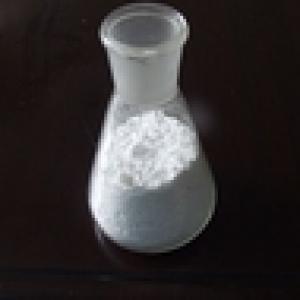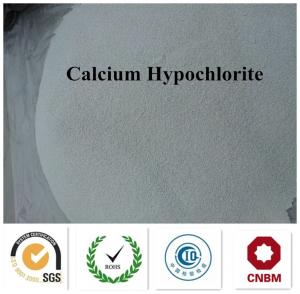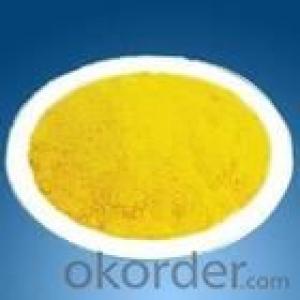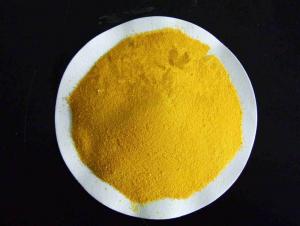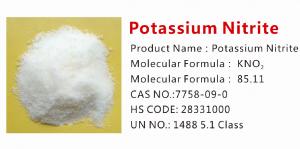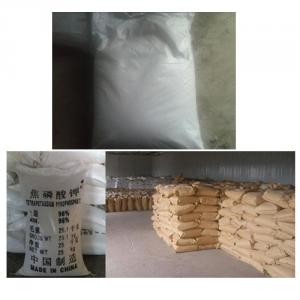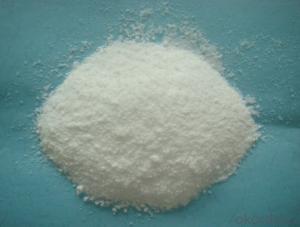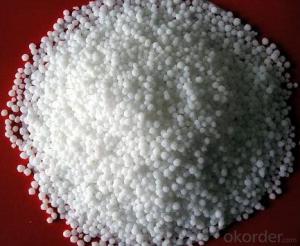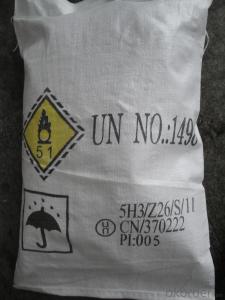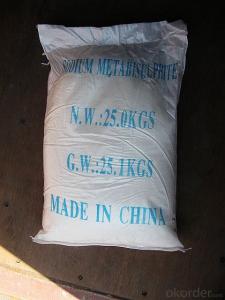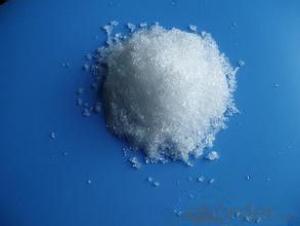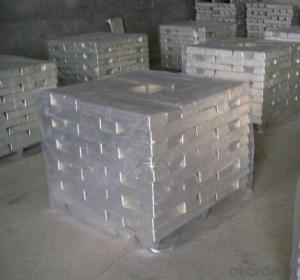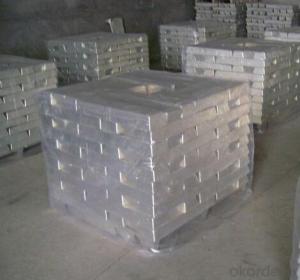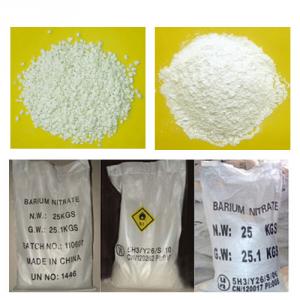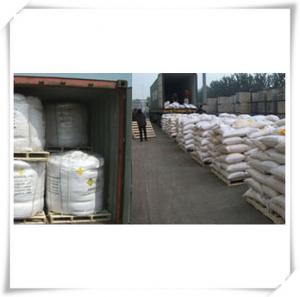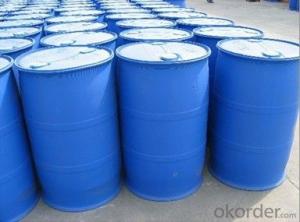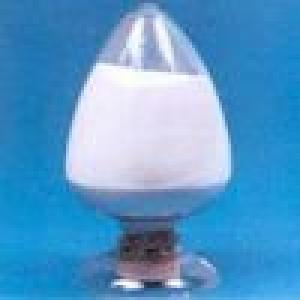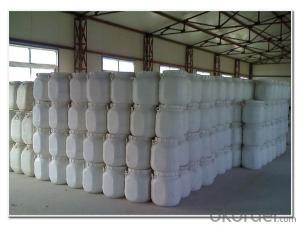SODIUM NITRITE INDUSTRY GRADE 99.3% POWDER
- Loading Port:
- Qingdao
- Payment Terms:
- TT OR LC
- Min Order Qty:
- 20 m.t
- Supply Capability:
- 8000 m.t/month
OKorder Service Pledge
OKorder Financial Service
You Might Also Like
sodium nitrite
1) purity:98.5%,
2) packing: 25KG/bag
3) good quality in competitive price
4)super suppiy force
Appearance and Properties: colorless, transparent or white microstrip yellow diamond crystal, taste, slightly bitter flavor, easy deliquescence.
Chemical Formula: NaNO2
Relative Density: 2.26
Melting point: 306.8°C
Concentration: Industrial grade level ≥ 99.2%.
Solubility: soluble in water, liquid ammonia, slightly soluble in ethanol, glycerol.
Sodium nitrate in the enamel industry as a flux, oxidizing agents and for the preparation of enamel powder raw materials. Sodium nitrate in the glass industry for a variety of glass and products, bleaching agents, defoamers, clarifying agents and oxidative flux. Sodium nitrate as the inorganic industrial fusion of caustic soda used in the manufacture of bleaching agents and other nitrates. Sodium nitrate in the food industry as a meat-processing hair color agent, to prevent deterioration of meat, and can play the role of seasoning. Sodium nitrate in the fertilizer industry as a quick application of acidic soil fertilizer, especially for root crops. In the dye industry in the production of picric acid and sodium nitrate is used as raw materials for dyes.
Sodium nitrate in the metallurgical industry as steel, aluminum alloy heat-treatment agent. Of sodium nitrate used in the machine the industrial metal cleaning agent and preparation of ferrous metals blue agent. Sodium nitrate in the pharmaceutical industry as a penicillin medium. Sodium nitrate in the cigarette industry as tobacco combustion-supporting agent. Sodium nitrate in Analytical Chemistry for chemical reagents. In addition, the sodium nitrate is also used in the production of explosives used in the enamel, glass industry, dye industry, medicine, agriculture as fertilizer.
Item |
Unit | Index | ||
Best quality | First quality | Qualified quality | ||
Content of Sodium nitrate (calculated by dry base) | % ≥ | 99.0 | 98.5 | 98.0 |
Content of Sodium nitrite (calculated by dry base) | % ≤ | 0.80 | 1.00 | 1.90 |
Content of Chloride (Nacl) (calculated by dry base) | % ≤ | 0.10 | 0.17 | ___ |
Content of insolubles in water (calculated by dry base) | % ≤ | 0.05 | 0.06 | 0.10 |
Moisture | % ≤ | 1.4 | 2.0 | 2.5 |
- Q: How to get an inorganic salt
- Inorganic salts are salts of inorganic compounds, formerly known as minerals. Plant growth needs N, P, K three elements and Ca, Zn, B, Mg, S, Fe and other trace elements. Depending on the type and amount of inorganic salts required for plant life, the water and various proportions of inorganic salts are scientifically formulated into plant nutrient solutions. The method of cultivating plants with plant nutrient solution is called soilless cultivation. The inorganic salts used to prepare the nutrient solution are generally not available for extraction, such as potassium nitrate, calcium nitrate, magnesium sulfate, potassium dihydrogen phosphate, copper sulfate, zinc sulfate and the like, and the reagent may be a chemical fertilizer. The purity of the reagent is high and the impurities of the fertilizer are more. If you can not get it, you can use soil leaching solution (fertile soil plus fresh water, the liquid obtained after filtration), which generally contains a variety of inorganic salts.
- Q: What is the inorganic salt, is not the organic salt and is not the inorganic salt
- Inorganic salt: Acid-base reaction product without carbon element However, the chemical properties such as carbonates and carbon oxides are the same as those of inorganic substances. Therefore, they are also classified as inorganic substances
- Q: how come a penny can hold more drops of the salt water solution than just plain tap water from your faucet?
- Put in in a narrow tube. The narrower it is, the more surface tension it has at the meniscus.
- Q: salt is organic or inorganic?
- Salts are ions such as NaCl. Organic salts contain carbon and inorganic salts contain no carbon. So NaCl would be an inorganic salt.
- Q: Is all the inorganic salts in the body related to life activities?
- Sugar is the most important material for the human body, all the activities of the human body, including learning, walking, digestion and breathing, etc., which are the most important substances in the human body. Consumption of energy (about 70%) mainly from the carbohydrates, fat is the body of the energy material, the protein is the basic material of human cells, but also to provide energy, vitamins are neither the main raw material of the organization, nor the supply of energy Material, but it has an important role in the life activities of the human body; inorganic salts constitute an important raw material of human tissue, water is the main component of cells. Which protein, sugar, fat, vitamins can burn for organic matter, and water, inorganic salts can not burn as inorganic.
- Q: What is the relationship of electronegativity and the solubility of a inorganic salts?Does the solubility increase when electronegativity decreases or vice-versa? or neither...
- The higher the electronegativity, the stronger the acid would be... Therefore it would be more soluble. take NaCl (common table salt) as an example. The difference between Na's electronegativity and Cl's electronegativity is very high so NaCl is a very soluble salt. The only exception is HF - it is a weak acid - it dissociates very weakly because O-H bonds cannot break H-F bonds which are very strong.
- Q: What does salt form when it dissolves?
- ions. depending on which kind of salt: NaCl -> Na+ + Cl-
- Q: A. oxygen demanding wastesB. organic plant nutrientsC. inorganic plant nutrientsD. water soluble inorganic chemicalsE. sediment
- Acids, D. water soluble inorganic chemicals salts, D. water soluble inorganic chemicals metals E. sediment
- Q: I am a candidate for this year's Harbin City, Jiqiu the standard answer, tomorrow I will test !!!
- The distribution of inorganic salts in the human body is extremely uneven. For example, calcium and phosphorus are mostly in hard tissue such as bone and teeth, iron is concentrated in red blood cells, iodine is concentrated in the thyroid, barium is concentrated in adipose tissue, cobalt is concentrated in hematopoietic organs, and zinc is concentrated in muscle tissue.
- Q: is sugar and salt organic or inorganic?
- sugar is organic salt is not. Sugar is made from carbon that's why it's organic in compound
Send your message to us
SODIUM NITRITE INDUSTRY GRADE 99.3% POWDER
- Loading Port:
- Qingdao
- Payment Terms:
- TT OR LC
- Min Order Qty:
- 20 m.t
- Supply Capability:
- 8000 m.t/month
OKorder Service Pledge
OKorder Financial Service
Similar products
Hot products
Hot Searches






